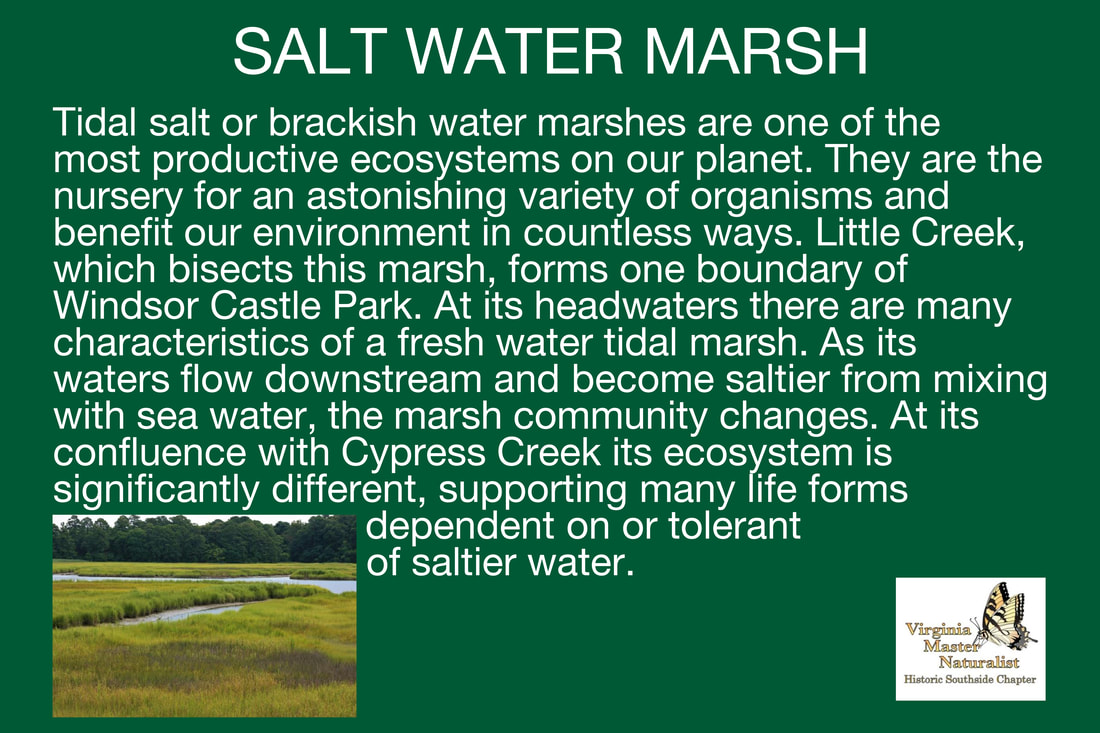Introduction
The waters bordering WCP are described as brackish, which means that they are not as salty as one would encounter at the ocean front. They are more correctly "mesohaline", having salinity ranging from 5-18 ppt (parts per thousand). This of course is a large determining factor in what can live here. Each day the salt marshes of Little Creek experience 2 cycles of a high tide followed by a low tide. There are approximately six hours between these two tide levels. At high tide, the water is a bit saltier than at low tide. Tides bring in debris, some edible and some not, and out-flowing tides remove materials. Incoming salty tides stir up the bottom and fish are fed from the resulting mixing of edible material from it.
Some facts to consider
The waters bordering WCP are described as brackish, which means that they are not as salty as one would encounter at the ocean front. They are more correctly "mesohaline", having salinity ranging from 5-18 ppt (parts per thousand). This of course is a large determining factor in what can live here. Each day the salt marshes of Little Creek experience 2 cycles of a high tide followed by a low tide. There are approximately six hours between these two tide levels. At high tide, the water is a bit saltier than at low tide. Tides bring in debris, some edible and some not, and out-flowing tides remove materials. Incoming salty tides stir up the bottom and fish are fed from the resulting mixing of edible material from it.
Some facts to consider
- Grasses are the type of plant found typically in marshes. In looking over the WCP marsh, there are many different kinds of grasses, including Smooth Cord Grass, Big Cord Grass, Salt Meadow Hay, Phragmites, and Cattails. Another grass-like plant found in the marsh is Black Needle Rush. It is a member of the Rush family of flowering plants, distinguished by cylindrical stalks or hollow, stem-like leaves.
- Often tidal influxes bring in all kinds of debris and dead material, depositing them at the base of marsh plants as the tide subsides. This is actually a good thing for marsh soil because it enriches the soil nutrients and provides food for fiddler crabs, which eat all kinds of bacteria, dead material, and algae.
- Tidal marshes are very productive ecosystems. The many organisms here are capable of capturing sunlight and transforming it into living tissue. In marshes such as those at WCP, the densely packed grasses, phytoplankton in the water, and algae in the soil accomplish this.








